Your first line of defense against hypothermia is your clothing. Here’s how to make sure the fabrics you choose will make you comfortable and not cost you your life.
By Leon Pantenburg
One of the most important activities for preparedness in any setting is know how to dress and what fabrics to wear. Different fabrics have radically different properties. Choosing the wrong type, or mixing clothing of different materials can be disastrous.

These Troop 18 Boy Scouts stayed warm on this winter hike because they all dressed correctly for the weather conditions.
You may not be able to tell the properties of a garment just by looking. A nice, fuzzy and thick 100-percent cotton flannel shirt will be warm and cozy until it gets wet. At that point, the wet shirt may suck the heat out of your torso and cause hypothermia!
On the other side of the equation is wool. My hands-down favorite in the winter, which is clothing made with 100 percent wool, is generally not the best choice for a desert hike in August. Wool traps heat, and while it provides some UV protection, the material will prevent your body from cooling quickly.
Before buying any clothing item, read the labels and discover the material content. Ignore fashion or what’s trendy (I know that’s hard – I have a 28-year-old daughter!), and make your purchase based on the activity and the clothing protection that will be needed. And that includes the SPF rating of a good all-around summer shirt.
I recently field tested some different types and designs of insulated socks. Here is what I found.
TOP FABRIC CHOICES FOR OUTDOOR CLOTHING
* Cotton: Depending on where you live, cotton clothing can kill you. Cotton is hydrophilic, meaning it is no good at wicking wetness away from the skin, and can become damp just by being exposed to humidity.
Once wet, cotton feels cold and can lose up to 90 percent of its insulating properties. Wet cotton can wick heat from your body 25 times faster than when it’s dry. What feels like a cool and breezy shirt to you in the hot sun can quickly become dangerous if it cools below 60 degrees at night and your clothes are still wet. In humid conditions, it’s hard for the shirt to dry. People have died from hypothermia in the middle of summer when caught overnight in wet clothes.
But that doesn’t mean that cotton isn’t a fine option sometimes. I spend a lot of time in the Deep South, and my favorite hot weather shirt is a medium-weight, white and 100 percent cotton Navy Surplus shirt. You can’t find them anymore and I bought mine 40 years ago. Those old Army/Navy Surplus stores sure were fun for browsing and picking up great gear. My favorite white shirt has a thick collar that can be pulled up to shade my neck, and pockets with flaps and buttons. Cotton also has a modest amount of UV protection.
You can buy a plain, affordable white twill short sleeve shirt and wear it for years around the pool, beach, or water sports, fishing, or any other activity. Just throw it in the wash with some bleach and when it gets too stained to wear again, buy another one.
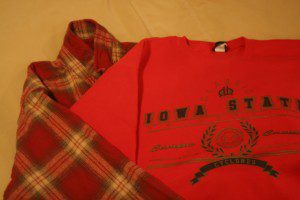
Both of these 100% cotton garments would keep you warm until they got wet. Then, this clothing can become dangerous to wear!
COOL OFF: On really hot days in a canoe, a cotton shirt can be soaked with water, and worn to cool you down. On a hot, desert hike, you can prevent heat stroke by using a few ounces of water to wet the shirt down. (The water can come from anywhere and doesn’t have to be clean just to use for evaporation. If necessary to conserve water in an emergency, you can pee on your shirt to wet it.) Just make sure to have another dry shirt with you to change when needed. Because once the cotton gets wet, you could end up in trouble.
Don’t be mislead by the looks and camouflage patterns of 100 percent cotton hunting clothes. These garments may be just fine for a hot, September dove hunt in Mississippi, or unseasonably warm deer hunt in November, but they become cold and clammy when damp or wet. And after sundown you could be mighty uncomfortable. I recommend a wool or polyester blend.
* Polypropylene: This material doesn’t absorb water, so it is a hydrophobic. This makes it a great base layer, since it wicks moisture away from your body. Athletes swear by it since they need the sweat to get off the body as fast as they work it up. For outerwear, there’s poly fleece but it’s not really that warm, unless used as an under layer. The bad news is that polypropylene is made from plastic and it melts, so a spark from the campfire may melt holes in your clothing and burn your skin. My wife had a nice Columbia fleece jacket that was ruined by campfire “pops”. It also retains body odor, in my experience, and shirts can stain badly under the arms. Keep this fabric as your under layers on the slopes and during the marathon, or other active sports events. But, I don’t like it for camping or light hiking.
* Polyester: This is essentially fabric made from plastic, and it’s good stuff for keeping you toasty warm by holding in heat. The material has good insulating and wind stopping value, and can be made into many different thicknesses. I wore out a fiberfill sleeping bag, and it always kept me warm, even when wet. It’s a great for a light weight overcoat that needs to repel moisture. My kids wore these kinds of rain jackets all the time growing up. Many running shirts are loose-weave polyester and they’ll wick away some moisture while providing a windbreak against the chest. But the shirts tend to stain under the arms, and oil stains won’t come out. My wife has ruined many polyester sport golf shirts while cooking in the kitchen.
* Nylon: The fabric is pretty tough and can be used as your outer layer. It doesn’t absorb much moisture, and what does evaporates quickly. It is best used as a windbreaker, to keep your clothing from being compromised by the wind and light rain. It’s great fabric for a poncho and I keep one of these packed in all my survival packs.
* Wool: Where I live in Central Oregon, wool is my standard go-to fabric for six months of the year. Try a good pair of wool pants and wool socks as they are the FIRST clothing items we recommend to new Boy Scouts in our troop. For our winter scout excursions, any sort of cotton clothing is strongly discouraged and jeans are outright banned from camp. If they wear cotton, they better layer up with serious overcoats. And unfortunately, when they sweat through their shirts, they will get cold. You will never go wrong with wool for your winter activities.
Wool absorbs moisture, but stays warmer than most all other fabrics, even when wet. It’s comfortable even during a rainy or snowy day. Sure, you’ll get a bit soaked with a beanie or gloves, scarf or sweater, but you won’t be cold. This is critical in an emergency situation if you’re caught out in the rain or snow, or fall while hiking across a stream, and now you’re delayed beyond your plans. Wool is also inherently flame retardant, so warming up by a fire is less dangerous than wearing a poly blend.
*Silk: Since originally posting this article, I’ve gotten feedback about including items made of 100% silk. I’ll confess I’ve never worn silk layers as they are a bit over my budget and not part of my paradigm. But they make sense. Silk is a natural fabric, and not bulky…a thin under layer of insulating comfort and likely worn for ages in Europe. You can get more information at Winter Silks.
* Down: This material is not a fabric, but rather, fluffy goose down and feathers stuffed inside a garment or sleeping bag. When dry, down is one of my favorite insulating materials. But I don’t use a down sleeping bag, and would hesitate wearing a down vest into the back country because of potential moisture problems. When wet, down becomes hydrophilic, and loses virtually all its insulation value. It can be worse than cotton as far as sucking heat away from your body.
In addition, a down sleeping bag or garment is virtually impossible to dry out in the back country, even with a roaring campfire. Down is wonderful for the urban town scene to keep you warm when shopping or going out for coffee. I know experienced outdoorspeople who swear by down, but it’s not my choice for serious outdoor activities.
Today more than ever, we have an abundant of options in all kinds of traditional and hi-tech fabrics to help us enjoy the outdoors. Be prepared for any weather and any emergency by knowing your fabrics – and have a great time.
Subscribe to the SurvivalCommonSense.com YouTube channel for more how-to’s and tips on using your own good common sense.

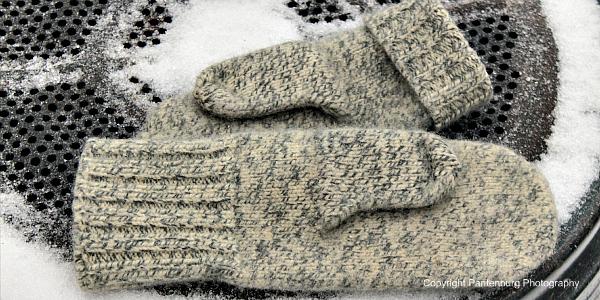
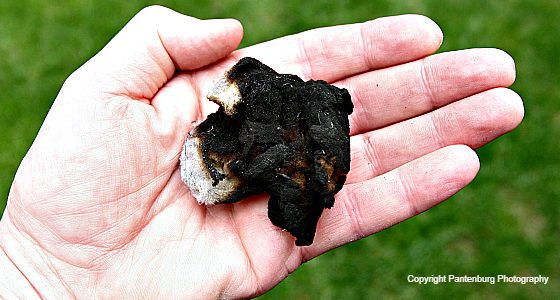
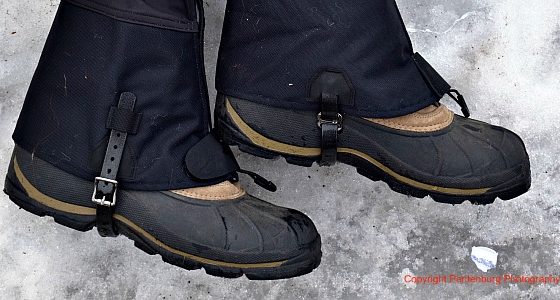
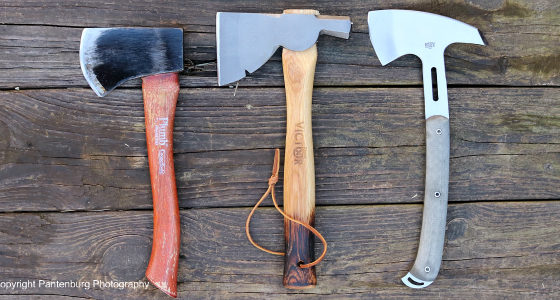
Leave a Reply